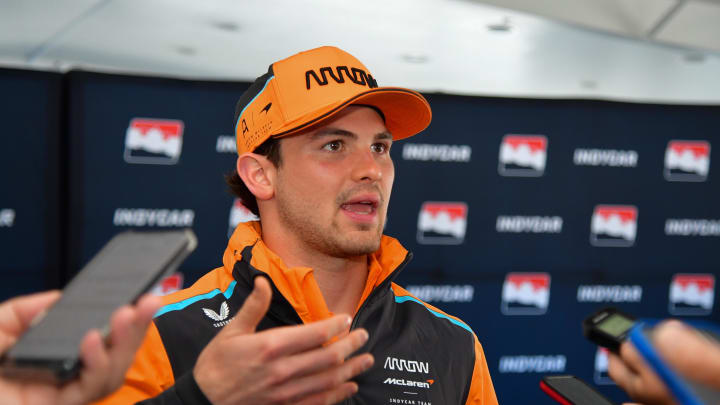Pato O'Ward Hits Out At IndyCar Hybrid Setup - 'Racing Has Taken A Big Step Down'

Arrow McLaren driver Pato O'Ward has criticized the new hybrid setup that IndyCar introduced five races ago, revealing that it has "led to fewer fights on the track." Ward added that the racing factor in recent races such as Mid-Ohio and Toronto had taken a major hit due to the hybridization of the series.
At Mid-Ohio, IndyCar unveiled the car's 2.2-liter turbocharged V6 engine, now paired with a low-voltage electric motor generator unit and a 320-kilojoule-per-lap energy storage system. Both units together work at speeds of up to 12,000 rpm.
This revolutionary hybrid unit, developed through a collaboration between IndyCar, Chevrolet, and Honda, allows the driver to both deploy and harvest energy, adding 60 bhp to the overall power output. When paired with the push-to-pass system, it boosts the power by over 120 bhp, pushing the total output beyond 800 hp.
On street circuits and road courses, the system offers the cars an extra electric boost, which helps in executing quick overtakes. The extra edge comes in handy during close battles, as mentioned by Chip Ganassi Racing’s Marcus Armstrong, who uses it more as a "defense mechanism" to save his position on the track. He told the media:
“It's much like a push-to-pass system.
"If you didn't know any better, it's just more power at the push of your finger. It's not too complex.
“I would say it's more of a defence mechanism than an attack if I'm honest.
“For example at Gateway, whenever I felt like I had a bad exit from a corner, I would be able to save myself from being overtaken just by deploying all of my battery. That's almost a comforting thing with your racing.”
Ward, who claimed victory at the Indy 200 in Mid-Ohio, where the hybrid system debuted, voiced his dissatisfaction with the significant change in the sport. He criticized the push-to-pass feature, arguing that it draws more power from the battery than the engine, which in his view hasn't improved performance, but has instead compromised close racing. Sharing his thoughts after the first practice in Portland, he added:
"I would say even in Mid-Ohio, it's a simple system.
“You can push to pass. Instead of using the boost from the engine, it's using it from the battery pack.
“I would say it hasn't been a massive change in terms of what we need to do in the car. Obviously there's more times we need to click this button. I think it's been more of a factor for the racing.
“I think the racing has taken a big step down just looking in Mid-Ohio [and] Toronto. People don't need to use their push to pass anymore to defend sometimes. That's ultimately just led to fewer fights on track. At least that's what I feel.”
